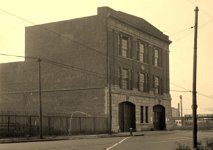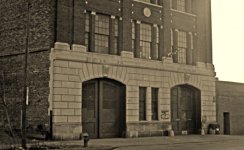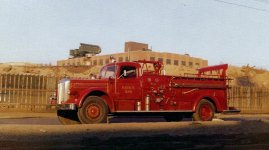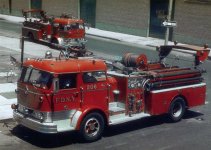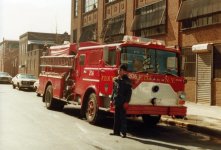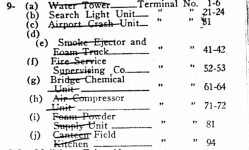1196 Metropolitan Avenue firehouse - Engine 206 1915-1976
1940s w/ "Hook & Ladder 133" lettering
View attachment 7822
View attachment 7824
Approx 1975 w/o "Hook & Ladder 133"
View attachment 7825
Engine 206
View attachment 7826
View attachment 7828
View attachment 7827
View attachment 7829
View attachment 7830
You are using an out of date browser. It may not display this or other websites correctly.
You should upgrade or use an alternative browser.
You should upgrade or use an alternative browser.
FDNY and NYC Firehouses and Fire Companies - 2nd Section
- Thread starter mack
- Start date
Engine 206/Foam 86/Foam 206 East Williamsburg, Brooklyn
Engine 6 Brooklyn Fire Department organized 14 High St former volunteer firehouse 1869
Engine 6 BFD moved to new firehouse 189 Pearl St 1892
Engine 6 BFD became Engine 6 FDNY 1898
Engine 6 became Engine 106 1899
Engine 106 became Engine 206 1913
Engine 206 moved to new firehouse 1196 Metropolitan Ave 1915
Engine 206 moved to new firehouse 1201 Grand St 1976
Foam 86 organized 1201 Grand St 1978
Foam 86 became Foam 206 1998
Engine 6 Brooklyn Fire Department
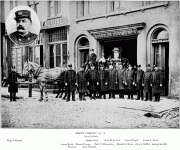
OUR FIREMEN : THE OFFICIAL HISTORY OF THE BROOKLYN FIRE DEPARTMENT, FROM THE FIRST VOLUNTEER TO THE LATEST APPOINTEE. COMPILED FROM THE RECORDS OF THE DEPARTMENT. ILLUSTRATED WITH ETCHED PORTRAITS AMD SCENES. BROOKLYN, N. Y. 1892.
Among the first of the city's engine-companies to be organized on the
establishment of the present Department was Engine Company No. 6. The order
creating the organization was issued Sept. 15, 1869, and on the following
day the men reported for duty at the quarters which they have since occupied
at No. 14 High Street. PATRICK LAHEY was selected for the honor of being the
company's first Foreman, and the choice proved to be an excellent one, for
he served with signal success for a period of twenty-five consecutive years,
lacking a few months, and until transferred, on March 24, 1890, to be
Foreman of Engine Company No. 24. Engine No. 6 is located in a two-story
brick building, 20 x 80 feet, which from time to time has been repaired and
refitted to accommodate it to the continued improvements in the methods of
fire fighting. Like most of the old fire-houses, it is now badly adapted
to the wants of a modem Department, and with the progress of the Bridge
Terminal improvements will probably soon be razed to the ground. A new
site will be chosen for the location of the new engine-house and when it is
built it will be a structure wanting in nothing that goes to make the
equipment of a first-class engine-company of the present day. In interior
arrangement, the present house varies but little from the others in the city
of the same size and general character. The apparatus-room is, of course, on
the ground floor, and there also are comfortable stalls for the splendid
team of grays that draw the engine and the handsome sorrel for the tender.
Upstairs are the sleeping apartments, bath and drying room and clothes lockers.
Foreman JAMES SMITH, who came to this company from Engine No. 22, on March
24, 1890, when Foreman LAHEY was transferred to Engine No. 24, is a veteran
fireman. He was born in Ireland, July 17, 1846, and came to this country in
time to be made a member of Truck No. 1, on Sept. 15, 1869. He did not
join the Department as a stepping-stone to some more lucrative position, but
from a love of the calling, and having quickly mastered the details of his
duties he performed them with zeal and fidelity and was frequently commended
by his superior officers for his efficiency. These, and the other
qualities that go to make a good fireman, brought him his reward in time.
It came on July 1, 1885, in the form of a promotion to the Foremanship of
Engine No. 22.
There the characteristics that marked him as a fireman were more pronounced
as a Foreman, and it was much to the regret of his old command that for the
benefit of the Department he was transferred in 1890 to the charge of Engine
No. 6 as Foreman. He is an exemplary fireman and a devoted husband and
father. He lives with his wife and children at No. 14 Hicks Street.
Engineer JAMES LAHEY is also built on the lines of a model fireman. He is
a born Irishman as well as a born fireman, and first saw the light Sept. 22,
1838. He reached America when the first shots on Sumpter were
reverberating over the land and calling patriots to arms. He quickly saw
where duty called and enrolled himself under the Stars and Stripes in the
navy, where for four long years the Union had no truer hearted defender than
the young Irishman. When the war was over and there was no more fighting
to be done against the country's enemies, Mr. LAHEY entered in the lists to
fight against the element that daily threatens homes, and on Sept. 14, 1869,
he received his appointment as a member of Engine No. 6. Though no longer
youthful. Engineer LAHEY is one of the youngest old men in the Department,
and it is the wish of his associates that it may be a long time before he
fails to hear the alarm to which he responds now with alacrity.
DAVID O'KEEFE, of No. 9 Adams Street, the driver, was born in New York City,
July 4» 1859. and although only in the Department since March 21, 1888, he
is an indispensable adjunct to Engine No. 6. He handles the reins
cleverly, and when the call to a fire is sounded nothing can be heard on
Fulton Street above the clatter of the hoofs of O'KEEFE'S iron gray team.
MICHAEL H. BOYLE was born in Ireland, Nov. 16, 1851, and early in life chose
Brooklyn as his future home. He was appointed and assigned to Engine No. 6
on Nov. 12, 1880. He has a comfortable home at No. 104 Concord Street.
GEORGE W. GURNELL, of No. 128 Raymond Street, was born in New York City on
May 8, 1845, and at the outbreak of the Civil War joined the Union army, and
fought in many of the principal battles of that bloody strife. On April 1,
1890, he was appointed a fireman, and assigned to Engine .No. 6, where he
has proved himself to be an excellent fireman.
JOHN M. CONNELL, whose home is at No. 109 Rapelyea Street, was born in
Louisville, Ky., April 28, i860. He was appointed July 21, 1890, and
assigned for duty with Engine No. 6, where during his two years of service
he has gained an excellent reputation for himself.
PATRICK F. MCLAUGHLIN. who has been a resident of this city all his life,
and at present lives at No. 46 Hicks Street, was born Sept. 18, 1865. He
was appointed on Aug. 1, 1890, and assigned to Engine No. 6, and he is now
considered one of the best and bravest in the Department.
THOMAS F. FARRELL, who lives at No. 114 Johnson Street, was born in this
city, March 3, 1849. He served all through the war with the 28th N. Y.
Vols. He was appointed a fireman, March 1, 1884, and assigned to Engine
No. 6 for duty. On the morning of Jan. 10, 1892, with the assistance of a
citizen, he rescued Mr. and Mrs. RAYDER from the third floor of a burning
building at No. 39 Henry Street.
FRANCIS RILEY, who lives at No. 35 Middagh Street, was born in New York
City, Sept. 7, 1845, and at the outbreak of the war enlisted in the army and
fought in both the battles of Bull Run and also at Antietam and Gettysburg.
He was appointed a fireman in Oct 1, 1875, and assigned to Engine No. 6,
where he still performs his duty with the same energy that he displayed when
he went to the front.
JAMES WRIGHT, who resides at No. 325 Tenth Street, was born in England, July
12, 1839. He came to this country a short time before the war, and
enlisted in the 13th N. Y. Vols., and fought at the battles of Bull Run and
Vicksburg. On Jan. 23, 1887, he was appointed a fireman, and assigned to
Engine No. 6, where he has served without interruption.
JAMES A. JONES was born in this city, Jan. 28, 1866, and was appointed a
fireman on March 12, 1891, Engine No. 6 being his original assignment He
lives at No. 310 Water Street. At a fire in a building on the corner of
Myrtle Avenue and Bridge Street he was seriously injured. He started up a
ladder on the Myrtle Avenue front. When he reached the top round the ladder
slipped, and Jones fell into a pile of broken glass and the heavy ladder
fell on him; he was taken home in an ambulance, and it was several weeks
before he could return for duty.
JOHN KEENAN, who lives at No. 66 Columbia Street, was born in this city June
24, 1865, and was appointed a fireman on Dec. 10, 1891. He was assigned to
Engine Co. 6, and has done good work.
1196 Metropolitan Avenue
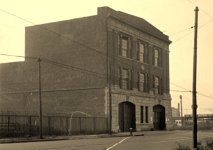

1201 Grand Street
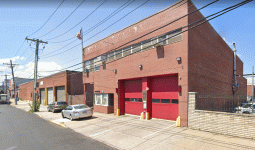
Engine 206
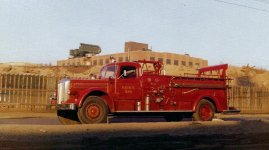
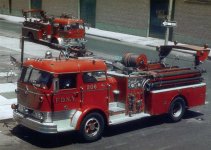
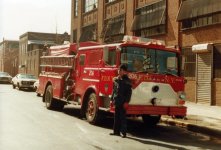
1909 Engine 106 (206) Medal
JOHN W. LARKIN FF. ENG. 206 JAN. 1, 1904 1905 BROOKLYN CITIZENS
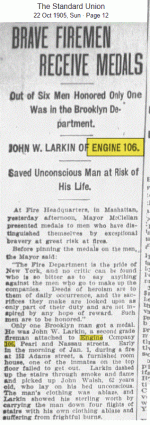
1919
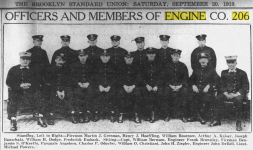
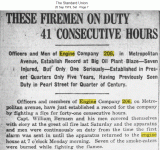
E 206 LODD
While fighting a fire at 913 Metropolitan Avenue Captain George C. Strauss of Engine Company 206, was overcome by smoke and exposure. He died from a heart attack as he was being taken to the hospital. Captain Strauss was fifty-five years old and had been promoted a year ago as Captain of Engine 206 after twenty-five years of service. He lived at 4142 Benham Street, Elmhurst with his wife and two sons. (From "The Last Alarm" by Boucher, Urbanowicz & Melahn, 2007)
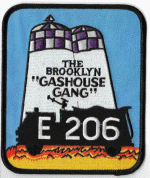
Engine 6 Brooklyn Fire Department organized 14 High St former volunteer firehouse 1869
Engine 6 BFD moved to new firehouse 189 Pearl St 1892
Engine 6 BFD became Engine 6 FDNY 1898
Engine 6 became Engine 106 1899
Engine 106 became Engine 206 1913
Engine 206 moved to new firehouse 1196 Metropolitan Ave 1915
Engine 206 moved to new firehouse 1201 Grand St 1976
Foam 86 organized 1201 Grand St 1978
Foam 86 became Foam 206 1998
Engine 6 Brooklyn Fire Department

OUR FIREMEN : THE OFFICIAL HISTORY OF THE BROOKLYN FIRE DEPARTMENT, FROM THE FIRST VOLUNTEER TO THE LATEST APPOINTEE. COMPILED FROM THE RECORDS OF THE DEPARTMENT. ILLUSTRATED WITH ETCHED PORTRAITS AMD SCENES. BROOKLYN, N. Y. 1892.
Among the first of the city's engine-companies to be organized on the
establishment of the present Department was Engine Company No. 6. The order
creating the organization was issued Sept. 15, 1869, and on the following
day the men reported for duty at the quarters which they have since occupied
at No. 14 High Street. PATRICK LAHEY was selected for the honor of being the
company's first Foreman, and the choice proved to be an excellent one, for
he served with signal success for a period of twenty-five consecutive years,
lacking a few months, and until transferred, on March 24, 1890, to be
Foreman of Engine Company No. 24. Engine No. 6 is located in a two-story
brick building, 20 x 80 feet, which from time to time has been repaired and
refitted to accommodate it to the continued improvements in the methods of
fire fighting. Like most of the old fire-houses, it is now badly adapted
to the wants of a modem Department, and with the progress of the Bridge
Terminal improvements will probably soon be razed to the ground. A new
site will be chosen for the location of the new engine-house and when it is
built it will be a structure wanting in nothing that goes to make the
equipment of a first-class engine-company of the present day. In interior
arrangement, the present house varies but little from the others in the city
of the same size and general character. The apparatus-room is, of course, on
the ground floor, and there also are comfortable stalls for the splendid
team of grays that draw the engine and the handsome sorrel for the tender.
Upstairs are the sleeping apartments, bath and drying room and clothes lockers.
Foreman JAMES SMITH, who came to this company from Engine No. 22, on March
24, 1890, when Foreman LAHEY was transferred to Engine No. 24, is a veteran
fireman. He was born in Ireland, July 17, 1846, and came to this country in
time to be made a member of Truck No. 1, on Sept. 15, 1869. He did not
join the Department as a stepping-stone to some more lucrative position, but
from a love of the calling, and having quickly mastered the details of his
duties he performed them with zeal and fidelity and was frequently commended
by his superior officers for his efficiency. These, and the other
qualities that go to make a good fireman, brought him his reward in time.
It came on July 1, 1885, in the form of a promotion to the Foremanship of
Engine No. 22.
There the characteristics that marked him as a fireman were more pronounced
as a Foreman, and it was much to the regret of his old command that for the
benefit of the Department he was transferred in 1890 to the charge of Engine
No. 6 as Foreman. He is an exemplary fireman and a devoted husband and
father. He lives with his wife and children at No. 14 Hicks Street.
Engineer JAMES LAHEY is also built on the lines of a model fireman. He is
a born Irishman as well as a born fireman, and first saw the light Sept. 22,
1838. He reached America when the first shots on Sumpter were
reverberating over the land and calling patriots to arms. He quickly saw
where duty called and enrolled himself under the Stars and Stripes in the
navy, where for four long years the Union had no truer hearted defender than
the young Irishman. When the war was over and there was no more fighting
to be done against the country's enemies, Mr. LAHEY entered in the lists to
fight against the element that daily threatens homes, and on Sept. 14, 1869,
he received his appointment as a member of Engine No. 6. Though no longer
youthful. Engineer LAHEY is one of the youngest old men in the Department,
and it is the wish of his associates that it may be a long time before he
fails to hear the alarm to which he responds now with alacrity.
DAVID O'KEEFE, of No. 9 Adams Street, the driver, was born in New York City,
July 4» 1859. and although only in the Department since March 21, 1888, he
is an indispensable adjunct to Engine No. 6. He handles the reins
cleverly, and when the call to a fire is sounded nothing can be heard on
Fulton Street above the clatter of the hoofs of O'KEEFE'S iron gray team.
MICHAEL H. BOYLE was born in Ireland, Nov. 16, 1851, and early in life chose
Brooklyn as his future home. He was appointed and assigned to Engine No. 6
on Nov. 12, 1880. He has a comfortable home at No. 104 Concord Street.
GEORGE W. GURNELL, of No. 128 Raymond Street, was born in New York City on
May 8, 1845, and at the outbreak of the Civil War joined the Union army, and
fought in many of the principal battles of that bloody strife. On April 1,
1890, he was appointed a fireman, and assigned to Engine .No. 6, where he
has proved himself to be an excellent fireman.
JOHN M. CONNELL, whose home is at No. 109 Rapelyea Street, was born in
Louisville, Ky., April 28, i860. He was appointed July 21, 1890, and
assigned for duty with Engine No. 6, where during his two years of service
he has gained an excellent reputation for himself.
PATRICK F. MCLAUGHLIN. who has been a resident of this city all his life,
and at present lives at No. 46 Hicks Street, was born Sept. 18, 1865. He
was appointed on Aug. 1, 1890, and assigned to Engine No. 6, and he is now
considered one of the best and bravest in the Department.
THOMAS F. FARRELL, who lives at No. 114 Johnson Street, was born in this
city, March 3, 1849. He served all through the war with the 28th N. Y.
Vols. He was appointed a fireman, March 1, 1884, and assigned to Engine
No. 6 for duty. On the morning of Jan. 10, 1892, with the assistance of a
citizen, he rescued Mr. and Mrs. RAYDER from the third floor of a burning
building at No. 39 Henry Street.
FRANCIS RILEY, who lives at No. 35 Middagh Street, was born in New York
City, Sept. 7, 1845, and at the outbreak of the war enlisted in the army and
fought in both the battles of Bull Run and also at Antietam and Gettysburg.
He was appointed a fireman in Oct 1, 1875, and assigned to Engine No. 6,
where he still performs his duty with the same energy that he displayed when
he went to the front.
JAMES WRIGHT, who resides at No. 325 Tenth Street, was born in England, July
12, 1839. He came to this country a short time before the war, and
enlisted in the 13th N. Y. Vols., and fought at the battles of Bull Run and
Vicksburg. On Jan. 23, 1887, he was appointed a fireman, and assigned to
Engine No. 6, where he has served without interruption.
JAMES A. JONES was born in this city, Jan. 28, 1866, and was appointed a
fireman on March 12, 1891, Engine No. 6 being his original assignment He
lives at No. 310 Water Street. At a fire in a building on the corner of
Myrtle Avenue and Bridge Street he was seriously injured. He started up a
ladder on the Myrtle Avenue front. When he reached the top round the ladder
slipped, and Jones fell into a pile of broken glass and the heavy ladder
fell on him; he was taken home in an ambulance, and it was several weeks
before he could return for duty.
JOHN KEENAN, who lives at No. 66 Columbia Street, was born in this city June
24, 1865, and was appointed a fireman on Dec. 10, 1891. He was assigned to
Engine Co. 6, and has done good work.
1196 Metropolitan Avenue


1201 Grand Street

Engine 206



1909 Engine 106 (206) Medal
JOHN W. LARKIN FF. ENG. 206 JAN. 1, 1904 1905 BROOKLYN CITIZENS

1919


E 206 LODD
| CAPTAIN | GEORGE C. STRAUSS | ENGINE 206 | February 26, 1928 |
While fighting a fire at 913 Metropolitan Avenue Captain George C. Strauss of Engine Company 206, was overcome by smoke and exposure. He died from a heart attack as he was being taken to the hospital. Captain Strauss was fifty-five years old and had been promoted a year ago as Captain of Engine 206 after twenty-five years of service. He lived at 4142 Benham Street, Elmhurst with his wife and two sons. (From "The Last Alarm" by Boucher, Urbanowicz & Melahn, 2007)

Last edited:
Engine 206 - NYC Firehouses and Fire Companies
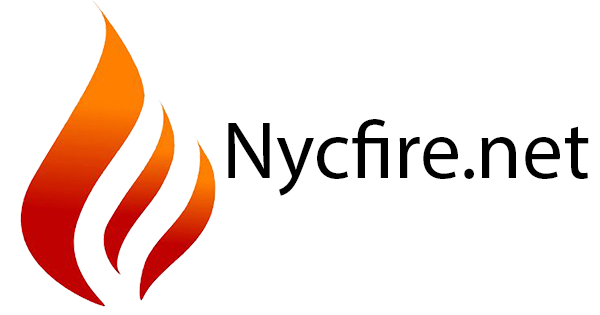
 www.nycfire.net
www.nycfire.net

FDNY and NYC Firehouses and Fire Companies
Thanks, Mack, for the 280/132 history. Like JOR 176, I also grew up in the neighborhood and hung out in the house as a kid. I was an Auxiliary there from 1968 to 1975. The house, when built, had a wall running down the middle of the building and two of everything (housewatch, kitchen, bunkrooms...
 www.nycfire.net
www.nycfire.net
My GGGrandfather served here during the late 1800's. His name was Adam Messer. Would you mind emailing these pics to me any any others you may have? I'm doing some genealogy work for my family. I just learned this week that he was a firefighter.ENGINE 15/LADDER 18/BATTALION 4 (ENGINE 17 DISBANDED) FIREHOUSE 25 PITT STREET LOWER EAST SIDE, MANHATTAN DIVISION 1, BATTALION 4 "FORT PITT"
91 LUDLOW STREET ENGINE 17 FIREHOUSE - 1880-1939
View attachment 12251
91 LUDLOW STREET - CURRENT
View attachment 12250
- Joined
- Sep 25, 2013
- Messages
- 911
Start on page 186 of this thread. The 8 pages that follow contain loads of information and articles about E15, E17, & L18 and its members from the earliest days.My GGGrandfather served here during the late 1800's. His name was Adam Messer. Would you mind emailing these pics to me any any others you may have? I'm doing some genealogy work for my family. I just learned this week that he was a firefighter.

FDNY and NYC Firehouses and Fire Companies - 2nd Section
Thanks Mack for finding that video. Here is another fire pole back in the days of the pull box.
 www.nycfire.net
www.nycfire.net
- Joined
- Jul 20, 2022
- Messages
- 410
I think the entry above is wrong the telegraph code for Squads in FDNY during the years of the telegraph alarm system was "8" NOT 9.
Telegraph signal 8-2419-3 was a special call for Brooklyn's Squad 3 to Brooklyn Box 2419 E. 38 St. & Avenue H. 9 was the code for other special units such as the Mask Service Unit. Thawing Unit etc. Captain Bob Rainey FDNY Engine 26 retired.
Telegraph signal 8-2419-3 was a special call for Brooklyn's Squad 3 to Brooklyn Box 2419 E. 38 St. & Avenue H. 9 was the code for other special units such as the Mask Service Unit. Thawing Unit etc. Captain Bob Rainey FDNY Engine 26 retired.
- Joined
- Jun 27, 2017
- Messages
- 1,176
According to the Regulation for the Uniformed Force:
Telegraph box preliminary signal 8 is used increase, decrease, or shut down pressure on the High Pressure Water System
When used with box preliminary signal 8:
A telegraph box terminal signal would indicate the number of pounds desired in the system
If the box terminal signal is omitted, that would indicate a desire to shut down the system
One round of this signal shall be transmitted on both the primary and secondary circuits
A receipt of a 9-2 signal from a box in the High Pressure or border line zone shall also be regarded as an order to shut down the pressure for that box. Under such circumstances the regular shut down signal shall be omitted.
Telegraph box preliminary signal 8 is used increase, decrease, or shut down pressure on the High Pressure Water System
When used with box preliminary signal 8:
A telegraph box terminal signal would indicate the number of pounds desired in the system
If the box terminal signal is omitted, that would indicate a desire to shut down the system
One round of this signal shall be transmitted on both the primary and secondary circuits
A receipt of a 9-2 signal from a box in the High Pressure or border line zone shall also be regarded as an order to shut down the pressure for that box. Under such circumstances the regular shut down signal shall be omitted.

